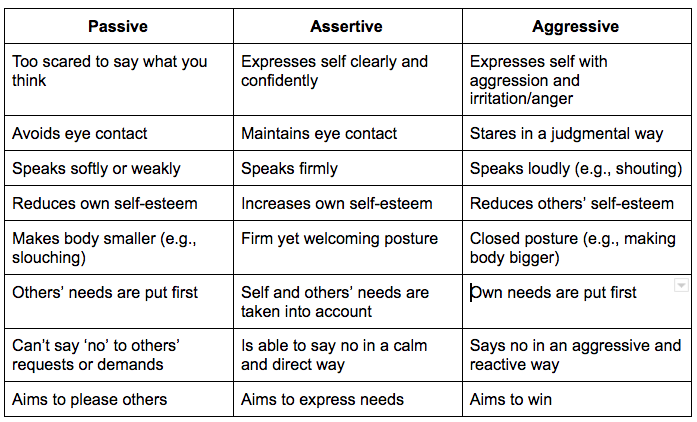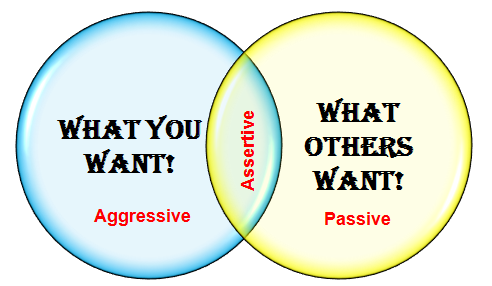Assertive Communication: Mastering Effective Dialogue
Assertive communication empowers you to express thoughts clearly. It helps build respect and understanding.
Imagine speaking confidently without hurting others’ feelings. It sounds ideal, right? Communicating assertively is vital for healthy relationships. It allows you to share ideas honestly and listen actively. In today’s fast-paced world, misunderstandings are common. Assertive communication reduces these issues by fostering respect and clarity.
It encourages open dialogue, letting everyone feel heard and valued. This form of communication also boosts self-esteem and reduces anxiety. People become more confident expressing needs and setting boundaries. Assertive communication is not about being aggressive or passive. It’s about finding a balance. This balance leads to stronger connections and more effective interactions. Ready to explore how you can enhance your communication skills? Let’s dive in.
Building Confidence In Communication
Building confidence in communication is essential for personal and professional growth. Assertive communication helps express thoughts clearly and respectfully. Confidence makes this process smoother and more effective. It encourages openness and reduces misunderstandings.
Overcoming Communication Barriers
Communication barriers often stem from fear or misunderstanding. People may fear judgment or rejection. These fears can hinder clear expression. Recognizing these barriers is the first step. Practice active listening to understand others better. Use simple language to ensure clarity. This reduces the chance of misinterpretation. Ask questions to confirm understanding. This shows interest and fosters open dialogue.
Embracing Self-assurance
Self-assurance is key to assertive communication. Believe in your message. Confidence grows with practice. Start small, like speaking in group meetings. Prepare your points in advance. This helps you stay focused. Maintain eye contact to show confidence. Use a steady voice to convey certainty. Body language also plays a role. Stand or sit upright to project confidence.
Key Principles Of Assertive Dialogue
Assertive communication emphasizes clear and honest expression. It focuses on respecting both your own and others’ rights. This style of dialogue promotes understanding and reduces conflict.
Assertive communication is not just about speaking up; it’s about speaking effectively. The key principles of assertive dialogue guide you in expressing your thoughts and feelings honestly while respecting others. By mastering these principles, you can transform interactions into meaningful exchanges that foster understanding and cooperation. ###Maintaining Respect And Clarity
Respect is the cornerstone of assertive communication. It involves acknowledging others’ perspectives while articulating your own. When you speak, aim for clarity. Use simple, direct language to ensure your message isn’t lost in translation. Imagine a meeting where everyone talks over each other. Frustrating, right? By maintaining respect and clarity, you make sure your voice is heard without shouting over others. This approach not only makes conversations more productive but also nurtures positive relationships. ###Balancing Assertiveness And Empathy
Assertiveness doesn’t mean bulldozing through conversations. It’s about balancing your needs with empathy for others. This balance is crucial for building trust and cooperation. Think of a time when you had to decline a friend’s invitation. You wanted to say no without hurting their feelings. Balancing assertiveness with empathy allows you to assert your boundaries while considering the other person’s feelings. Do you often find it challenging to stand your ground without feeling guilty? Practicing empathy helps you communicate more effectively and makes assertiveness a two-way street. You create an environment where everyone feels valued and understood. In your daily interactions, how do you maintain respect while being assertive? Share your experiences in the comments below.Techniques For Effective Expression
Assertive communication is a powerful tool that can transform your interactions and relationships. By expressing yourself effectively, you can convey your thoughts and feelings clearly and respectfully. But how do you achieve this level of communication? Let’s explore some practical techniques that can help you express yourself more effectively.
Utilizing ‘i’ Statements
Using ‘I’ statements is a simple yet effective way to express your feelings and thoughts without sounding accusatory. Instead of saying “You never listen,” try “I feel unheard when my opinions are not considered.” This approach allows you to take ownership of your emotions.
This technique encourages open dialogue and reduces defensiveness. It’s about expressing your needs clearly. Next time you’re in a conversation, think about how you can frame your statements using ‘I’. You might be surprised at how much more receptive people are to your words.
Setting Boundaries Clearly
Setting boundaries is crucial for maintaining healthy relationships. It’s about communicating your limits in a straightforward manner. For example, you can say, “I need time to myself after work to recharge.” This sets clear expectations without ambiguity.
When you set boundaries clearly, it helps others understand your needs and respect them. Think about areas in your life where boundaries are needed. Are there moments when you feel overwhelmed or taken for granted? Expressing these boundaries can lead to more balanced interactions.
Effective expression is within your reach with the right techniques. How can you apply these strategies in your daily conversations to make them more meaningful and impactful?

Credit: 1to1help.net
Handling Difficult Conversations
Handling difficult conversations is a skill everyone needs. These discussions can be awkward and stressful. Assertive communication helps manage these situations effectively. It ensures both parties feel heard and respected. The key is to express your thoughts clearly and calmly. This approach helps maintain strong relationships, even in challenging times.
Navigating Conflict With Poise
Conflict is part of life. Navigating it with poise is vital. Stay calm and composed during heated discussions. Listen actively to understand the other person’s viewpoint. Use clear language to express your thoughts. Avoid aggressive tones or body language. This approach reduces tension and promotes constructive dialogue.
Turning Challenges Into Opportunities
Difficult conversations offer growth opportunities. They help you learn new perspectives. Embrace these challenges with an open mind. Focus on solutions rather than problems. Find common ground to build understanding. This turns a challenge into a chance for improvement. It strengthens relationships and fosters mutual respect.
Enhancing Communication Skills
Assertive communication helps express thoughts clearly and respectfully. It balances confidence with empathy. This skill fosters healthy relationships and mutual understanding.
Enhancing communication skills is essential for fostering assertive interactions. Mastering this skill can transform your personal and professional relationships. It allows you to express your thoughts clearly and listen actively to others, creating a more harmonious environment. Let’s dive into how you can fine-tune your communication with active listening and non-verbal cues.Practicing Active Listening
Active listening is more than just hearing words; it’s about understanding and engaging with the speaker. Imagine being in a meeting and nodding along, but your mind is elsewhere. You miss the core message. Instead, focus on the speaker, make eye contact, and acknowledge their words with short affirmations. Reflect on what you hear. If a colleague mentions a challenge they’re facing, paraphrase it back to them. “So, you’re saying the deadline is too tight for the current resources?” This not only shows you are listening but also clarifies any misunderstandings. Ask open-ended questions to encourage deeper dialogue. Questions like “How do you feel about this approach?” invite more detailed responses and demonstrate your genuine interest. Active listening can transform how others perceive your engagement and empathy.Developing Non-verbal Cues
Non-verbal communication often speaks louder than words. Picture yourself in a conversation with crossed arms and a frown; it sends a conflicting message to your words of encouragement. Instead, maintain an open posture and a warm, genuine smile. Pay attention to gestures. A simple nod can affirm understanding, while a raised eyebrow might invite further explanation. These subtle cues can significantly impact the flow of conversation. Consider your tone of voice as well. A calm, steady tone suggests confidence, while a fluctuating pitch might signal uncertainty. Experiment with your tone in different scenarios to see how it changes the dynamic. How often do you consciously use body language to reinforce your words? Next time you communicate, be aware of these cues and observe the difference in response. Enhancing non-verbal communication can greatly improve your assertiveness and influence in interactions.
Credit: www.berkeleywellbeing.com

Credit: www.therapistaid.com
Frequently Asked Questions
What Is A Assertive Communication?
Assertive communication involves expressing thoughts and feelings clearly, confidently, and respectfully. It promotes mutual understanding and healthy dialogue.
What Are The 3 C’s Of Assertive Communication?
The 3 C’s of assertive communication are confidence, clarity, and control. Confidence involves expressing thoughts and feelings clearly. Clarity ensures your message is easy to understand. Control maintains a calm demeanor during interactions, managing emotions effectively. These elements foster effective and respectful communication.
What Is The 7 Assertive Communication Style?
The 7 assertive communication styles include being clear, honest, respectful, direct, confident, empathetic, and active listening. These styles help convey messages effectively and build strong relationships. Assertive communication promotes understanding and reduces conflicts.
Conclusion
Assertive communication builds strong relationships and boosts confidence. It fosters mutual respect and understanding. Speaking clearly helps express feelings and needs effectively. It prevents misunderstandings and conflicts. Practicing assertiveness leads to better personal and professional interactions. It encourages open and honest dialogue.
This communication style empowers individuals to stand firm without aggression. It promotes a positive environment where everyone feels heard. Developing assertive skills takes time but is rewarding. It enhances self-esteem and decision-making abilities. Start small, practice daily, and notice the positive changes.
Remember, assertive communication is a lifelong skill worth nurturing.




